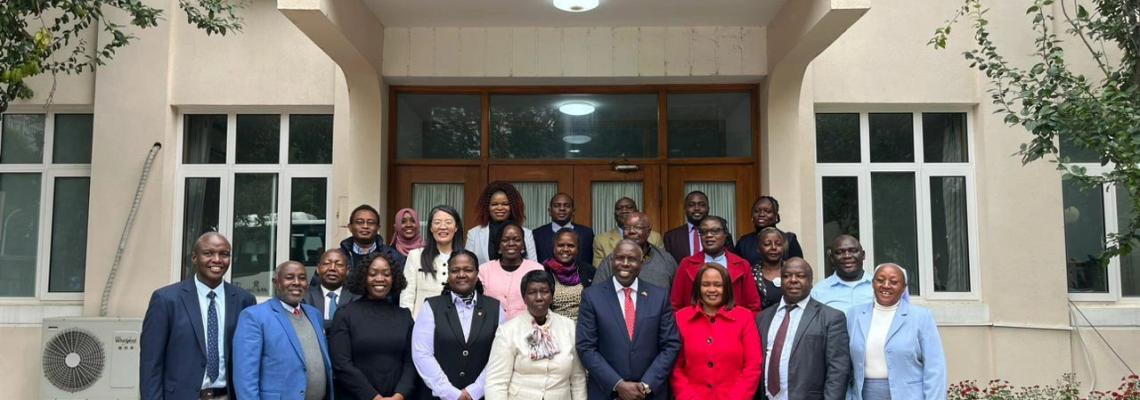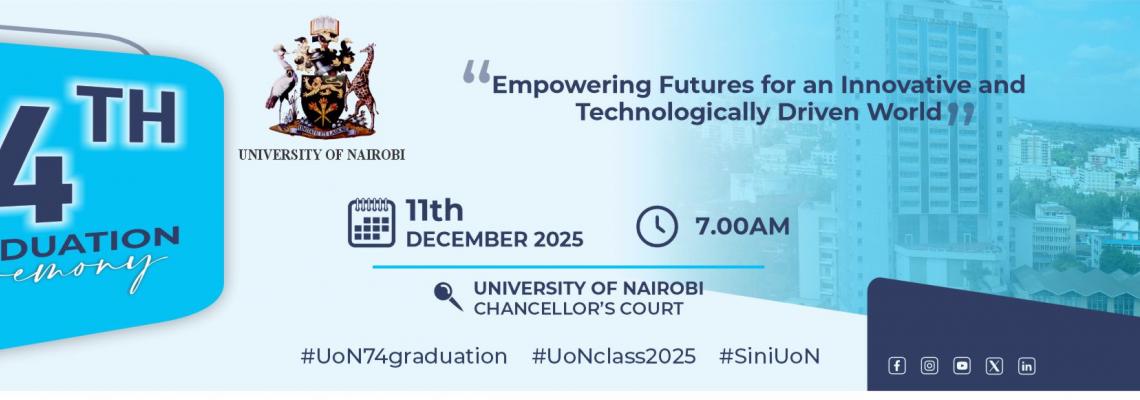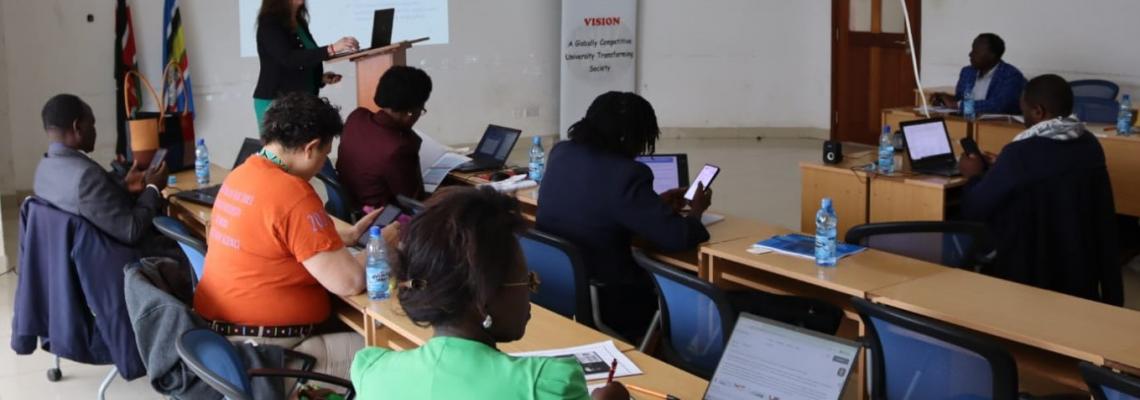Overview
According to the UNESCO Global Monitoring Report (2015), a total of 58 million primary school‐age children were out of school in 2012. About 50 per cent of out-of-school children live in sub-Saharan Africa. For young people affected by conflict, the situation is even direr. Sub Saharan Africa is home to 17 of the 33 countries and territories the World Bank classifies as ‘fragile or conflict affected’, where protracted armed conflicts remain all too common. As a result, young people affected by conflict in sub-Saharan Africa face enormous barriers to accessing quality education, and subsequently earning a livelihood and contributing positively to their society.
In 2009, the International Rescue Committee (IRC) and the University of Nairobi (UoN) established a partnership to create the first-ever graduate program for Education in Emergencies (EiE). The focus of the partnership was to build local and national humanitarian and educational capacity in Kenya, the greater Horn and East Africa region, and beyond.
Education in Emergencies Program
This program is hosted under the School of Education, Department of Education Administration and Planning, College of Education and External Studies. The School offers a wide range of academic expertise covering all stages of formal education from the early years to the primary and secondary stages of schooling.
Positioning Education in Emergencies Africa
Today 1.5 billion people live in conflict – affected and fragile contexts, majority in Sub-Saharan Africa. Some of the people in conflict situations have seen conflict for almost 30 years. Provision of education in conflict-affected, complex emergencies, and fragile contexts has been a challenge for the international community, national governments and the victims of conflict.
Education is a fundamental human right in itself as well as an enabling right, fostering the accomplishment of all other social, cultural, economic, civil and political rights. It is the bedrock of sustainable development, contributing to its social, economic and environmental dimensions, and underpins peace and security. The interconnected benefits of investments in quality education are immeasurable – generating greater economic returns and growth for individuals and societies, creating a lasting impact on health and gender equality, and leading to safer, more resilient and stable societies The impact on education has been substantial: the world has made remarkable progress since 2000, when the EFA and MGDs goals were established. Education in Emergencies is a major pillar for Sustainable Deployment Goals, especially SDG4.
Sponser
International Rescue Committee (IRC)
Principal Investigator
Abstract
University of Nairobi, Education in Emergencies has remarkably been a flagship program not only for Kenya, but also for the East African and the Horn of Africa for the last 10 years since the launch in 2010.
It is the world’s first Master’s of Education in Emergencies program: Using the combined expertise of humanitarian educators, researchers, and practitioners, a post-graduate-level course was designed to build core competencies for practitioners in EiE. It is a Self-sustaining program embedded within the University structure and the program is part of the regular course calendar and fully integrated into the Department of Educational Administration and Planning in the School of Education.
Over 600 M.Ed. students have completed the introductory course “Theory and Practice in Education Emergencies”, which is a mandatory course for all graduate students in the Department of Educational Administration and Planning. Between 2010 and 2020, over 300 students have enrolled in the Education in Emergencies specialization as either full-time or part-time students and over 80 EiE students have graduated to date.
Many students and graduates are spread in various organization, Counties and some outside Kenya and are already applying the knowledge and training acquired through the EiE program, such as working on educational teams with aid agencies or NGOs, supporting Ministries of Education in developing emergency responses, or integrating their EiE training into their work as teachers or school administrators. Specific examples include:
-
- Working and Implementing Ministry of Education programs in difficult circumstances and hard to reach areas; Kenya Somali boarder where there are threats from Somali based terror groups, schools located in flood based regions and communities, regions where social cultural issues are a threat to access, retention and completion.
- Designing and Supporting Child Protection and Programming in the Counties like Taita Taveta
- Supporting Out-of School education programs in refugee camps ; Kakuma , Kalobeyei and host communities
- Designing, Implementing and Supporting Education in Emergencies Programs to crisis affected children of South Sudan in the region of Jonglei State under Norwegian Refugees Council
- Developing a county-wide inclusion campaign in the pastoralist/nomadic region of Wajir on the Kenya-Somali border, which has led to an increased number of girls, refugees, and internally displaced children and youth in schools;
- Leading and coordinating a consortium of UN agencies NGOs to conduct an educational assessment of experiences of refugee and IDP children;
- Conducting a community needs assessments and strategy to accommodate the influx of returnees to South Sudan;
- Designing a National Peace campaign for the Kenya Forgiveness Project to prevent recurrence of violence from the 2013 election;
Brokering new partnerships: Between 2011 -2020, the EiE program has attracted international and local partners, in an effort to promote better linkages between NGOs, academic institutions and the private sector.
In 2013 the EiE program co-hosted the first Humanitarian Partnership Conference on the African continent, attracting over 70 different academic institutions and humanitarian agencies from around the world.
In 2017 , University of Nairobi hosted an International Symposium on Higher Education and Peace Building; University College London and University of Nairobi. 5 Universities and over 20 organizations including Local and International NGOs were represented.
In 2017 University of Nairobi and National Commission for UNESCO (NATCOM) co-hosted Knowledge Sharing Forum on Peace-building and Displacements: Engagement between Researchers and Practitioners







